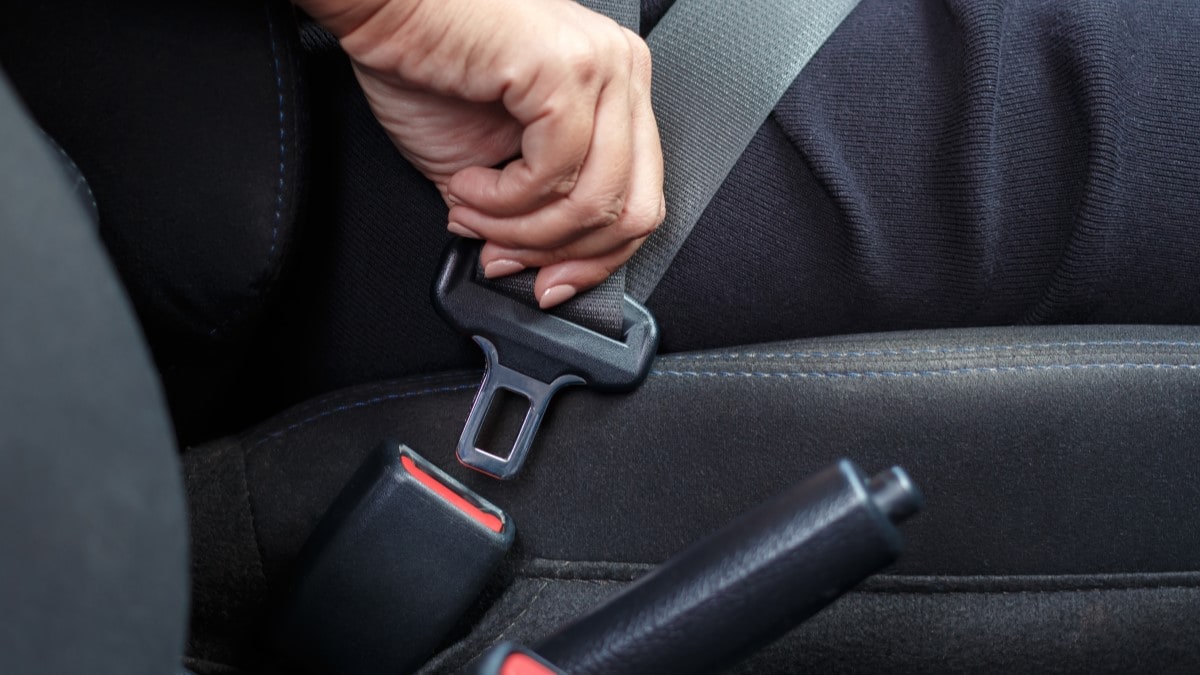Seat belts save lives, and most of us use them. But we sometimes need a nudge. A major auto safety group says seatbelt reminders are improving. The news is yet another sign that, when watchdog groups push automakers, driving gets safer for everyone.
The Data
A 2023 U.S. Department of Transportation study found that 92% of Americans consistently buckle up.
Examining crash data, researchers found, “Seat belts saved an estimated 14,955 lives and could have saved an additional 2,549 people if they had been wearing seat belts, in 2017 alone.”
The Watchdog
The federal government has many laws and regulations that seek to make cars safer. But one of the most effective voices in car safety is not a government agency. It’s a nonprofit group funded by car insurance companies.
Insurance companies have financial reasons to want car accidents to be rare and the injuries they cause to be minor. So, a group of them power their own safety lab – the Insurance Institute for Highway Safety (IIHS).
Cars sold in the U.S. go through government safety testing. You’re probably familiar with the National Highway Traffic Safety Administration’s five-star crash-test ratings.
Most also undergo IIHS testing. Many in the auto industry consider the institute’s testing to be tougher on cars because it can improve its standards without going through the lengthy public review process required of federal agencies.
The New Test
In 2022, the IIHS added a new item to the extensive list of safety tests it puts most cars through: The institute started measuring seat belt reminders.
Federal rules require that a car sound an audible signal for 4 to 8 seconds and offer a visual reminder for at least 60 seconds if a driver is unbuckled.
“In contrast, for a good rating from IIHS, vehicles have to have an audible reminder that lasts at least 90 seconds if any of the occupied front seats remains unbuckled, as well as meet volume standards and other conditions,” the institute says. It also requires a 30-second reminder if a rear occupant is unbuckled.
That first year, just 17% of new models earned a good rating. Sixty-five percent were rated marginal or poor.
Just two years later, “manufacturers have already flipped those numbers. Sixty-two percent of the 2024 models tested so far are rated good, while only 24% are rated marginal or poor.”
More Regulations, Tests Ahead
“Automakers can boost a vehicle’s performance in this test with just some small software changes,” explains IIHS President David Harkey. “These easy tweaks can have a big impact on safety.”
The institute saw similar results when it required better headlights — automakers responded quickly. Most already had high-quality headlights that could pass the toughest tests, but many offered them only on more expensive models. When the IIHS folded headlight standards into its testing, they built them into less-expensive cars.
Safety groups aren’t done pushing automakers to get better.
In the coming years, safety watchdogs have a series of new tests and standards planned for automakers. They include tests for automatic emergency braking systems, mandatory anti-drunk-driving tech, and the first-ever standards for pedestrian crashes.








